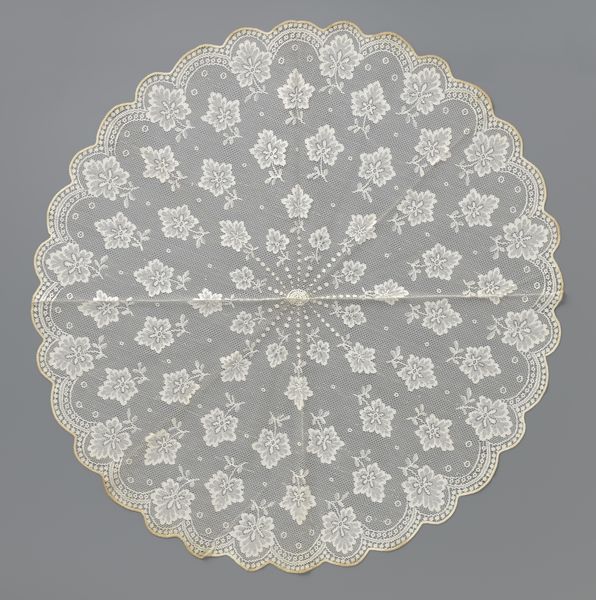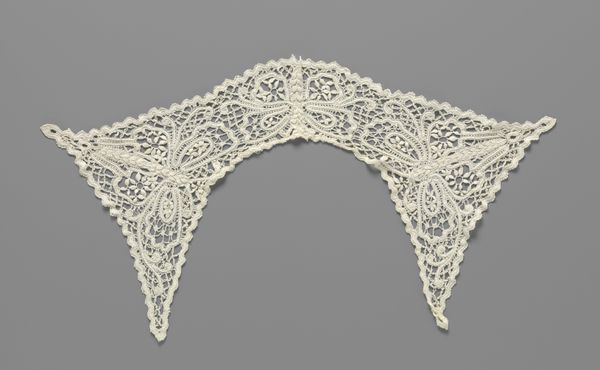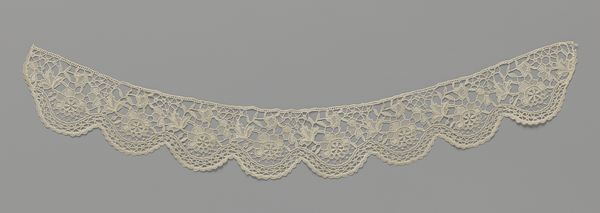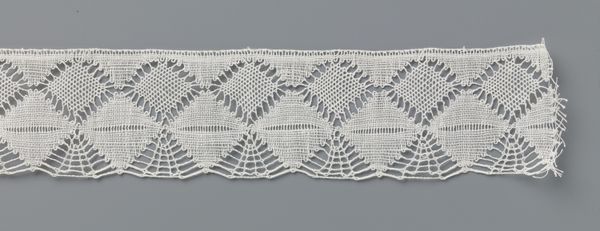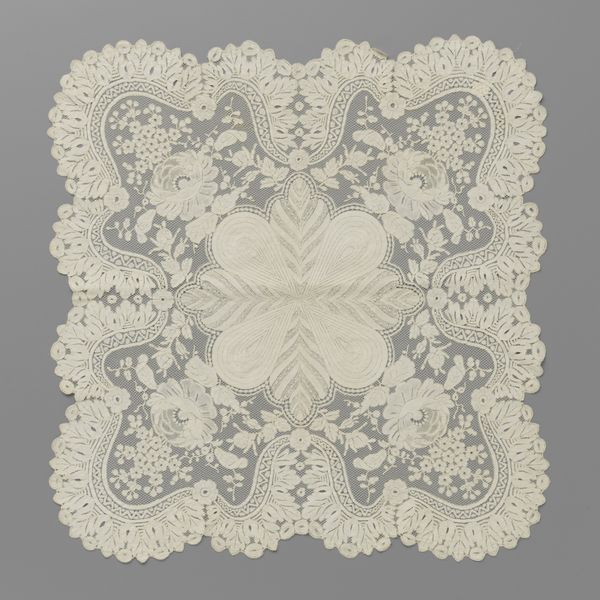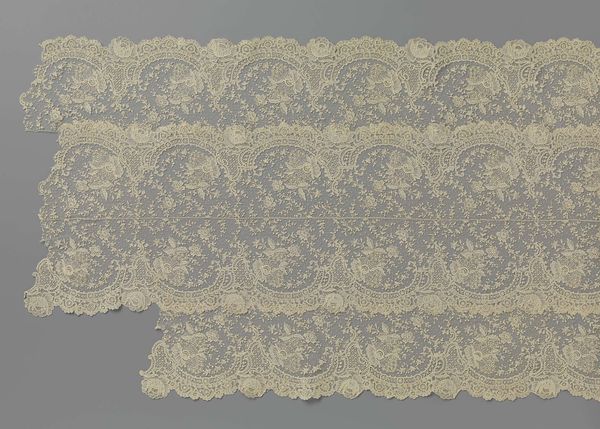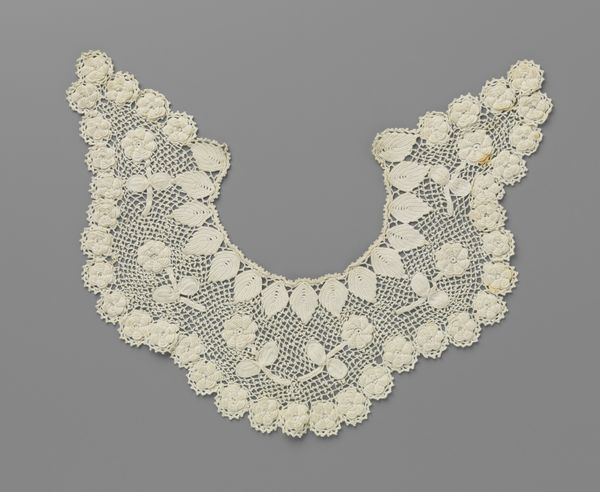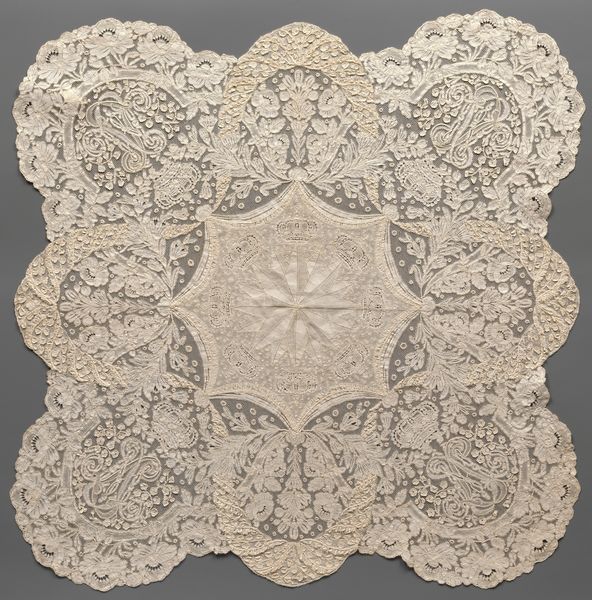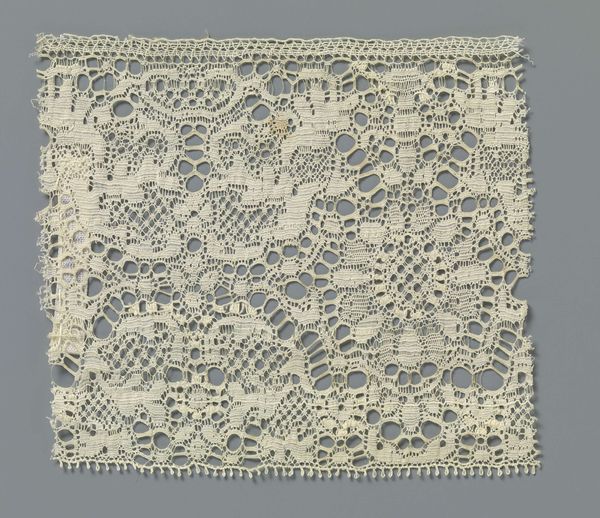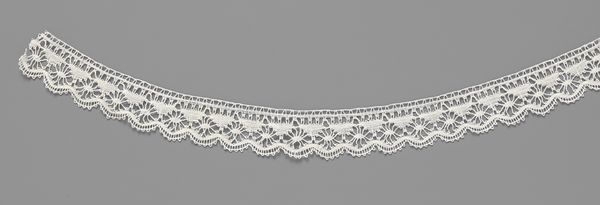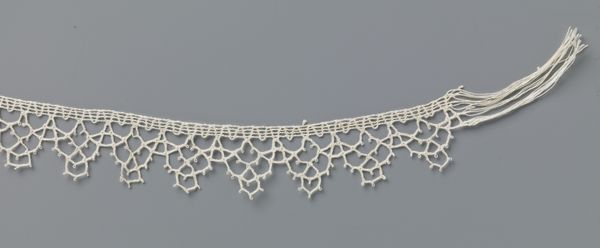
weaving, textile
#
pattern
#
weaving
#
bird
#
textile
#
textile design
#
decorative-art
Copyright: Rijks Museum: Open Domain
Curator: Here we have a parasol canopy made of lace, titled "Parasoldoek van kloskant met vogeltjes en stralende zonnen," dating from around 1875 to 1895. Editor: My immediate reaction is one of astonishing detail. The intricacy of the pattern work, and the repeating forms have an almost dizzying optical quality, drawing the eye across its entire surface. Curator: Exactly, observe how the circular motifs create a visual rhythm, almost like musical variations on a theme, interspersed with avian figures. And the materiality is essential to the piece's reading. Bobbin lace production during this period represented significant manual labor and a specific skill set, predominantly among women. Editor: A very pointed material analysis. I find it intriguing how an object meant for protection from the sun is itself constructed to filter light, creating delicate patterns on the skin of the user. The interplay between form and function speaks to societal nuances, doesn't it? Curator: Indeed. It also brings forth the issue of accessibility: only privileged members of society would have been able to afford such detailed and refined needlework. Its geometric layout also presents complex structural possibilities: each concentric ring seems to ripple outward from its core. Editor: I find myself pondering the life of the lacemaker and the market forces influencing its production and distribution, what were her working conditions like and her creative contribution to it? Was the textile made to custom specifications? Its craftsmanship represents hours of labor transformed into a functional yet purely ornamental object. Curator: You highlight an important aspect, shifting the perspective away from its aesthetic value towards production. Returning to form, notice the visual texture. Despite being primarily linear, the overall effect has almost a cloud-like appearance when the light catches. Editor: I see that, absolutely, the structure, labour, and materiality coalesce into an evocative and aesthetic historical object, rich in both symbolic visual patterns and the history of human ingenuity. Curator: Thank you for highlighting those connections; it allows us to appreciate lace beyond decoration, revealing its broader cultural and historical implications.
Comments
No comments
Be the first to comment and join the conversation on the ultimate creative platform.
